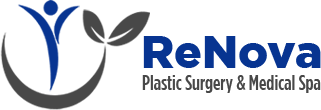On average, you can expect the wrinkle-reducing results of Botox treatment to last three to four months. However, Dr. Julio Clavijo-Alvarez is often asked by Botox enthusiasts whether there is anything they can do to make their results last longer. In fact, there is! Read on for tips to make Botox results last longer.
Schedule Regular Treatments (At First)
Having Botox injections regularly weakens the muscles over time, relaxing them so they don’t contract as frequently and cause prominent wrinkles. Initially, you may schedule treatment every four months; however, after a year or two, you may notice the effects lasting longer and need to schedule treatments less frequently.
Choose the Right Injector
As Dr. Clavijo discussed in a previous blog post, not all Botox injectors are created equally. An experienced and reputable injector knows how to target the right muscles with the precise amount of product for long-lasting results. Look for someone that is a board-certified plastic surgeon and has extensive experience using Botox (and other injectable fillers). A less-experienced injector may over- or under-treat the area, messing with the longevity of the effects.
Beware of Cheap Gimmicks
Steer clear of med spas that advertise special “Botox Days” (especially if they are held on a Friday). The cheap prices may seem appealing, but the practice may actually be trying to use up reconstituted Botox that is close to expiration. Old or over-diluted Botox certainly wears off faster than normal.
Don’t Stress About Lines and Wrinkles
Botox relaxes the facial muscles that contract to form wrinkles, but constantly looking in the mirror and worrying about your wrinkles only activates the facial muscles more, canceling out the effects of treatment. Avoid obsessing about wrinkles and try to relax and enjoy the results of your Botox.
Protect Your Face from the Sun
Unprotected sun exposure can dilate the blood vessels, potentially dispersing the Botox more quickly than normal. Not to mention, sun contributes to the breakdown and premature aging of the skin anyway. Use facial sunscreen and wear a wide-brimmed hat.
Schedule a Botox Appointment
If you are bothered by noticeable wrinkles around your forehead or eyes, schedule an appointment to discuss Botox with Dr. Clavijo. Call ReNova Plastic Surgery today at (412) 638-2391 to make your appointment.





